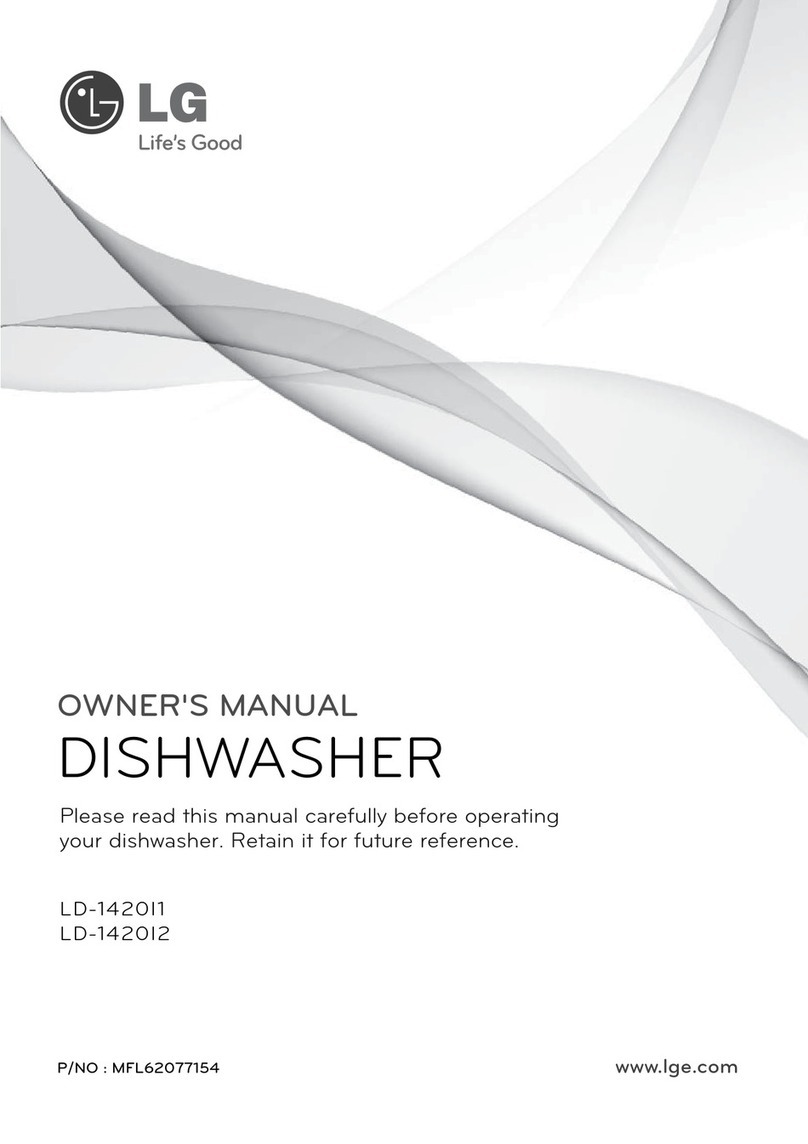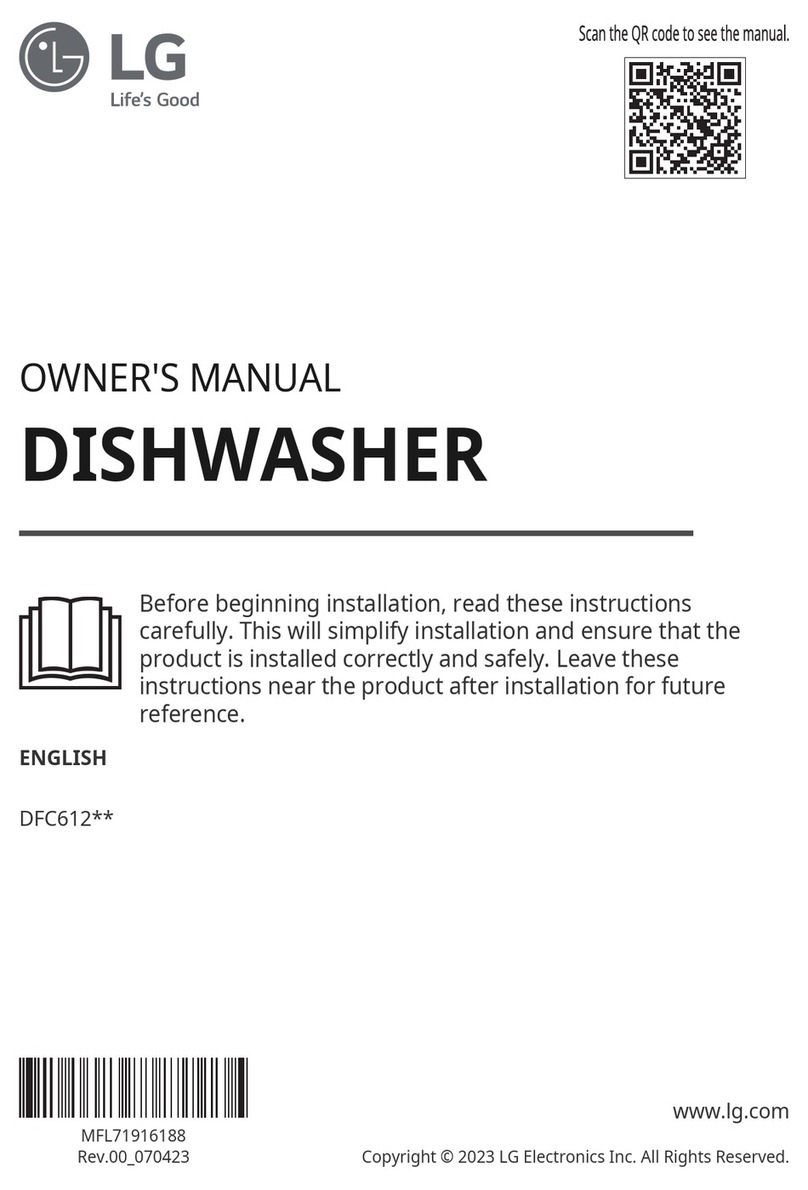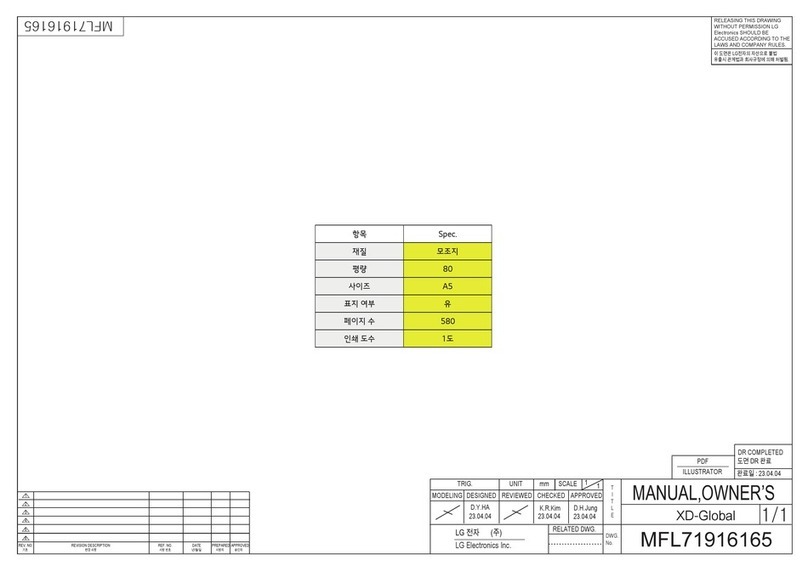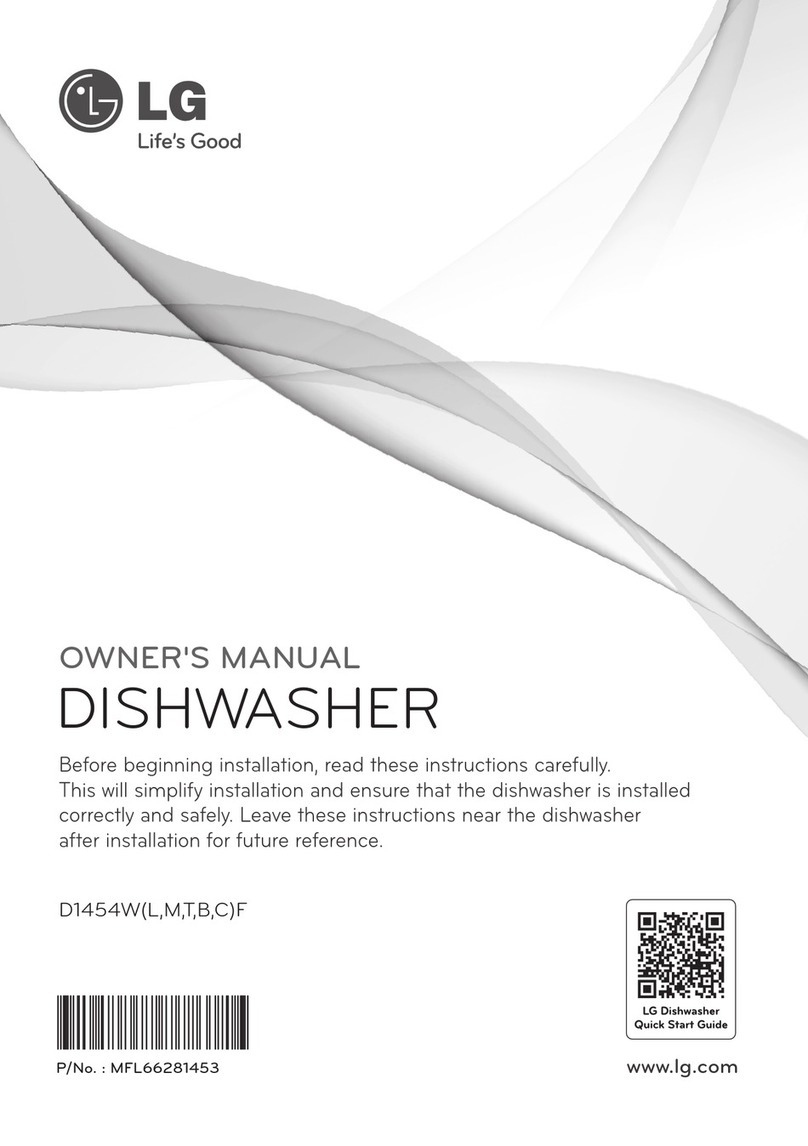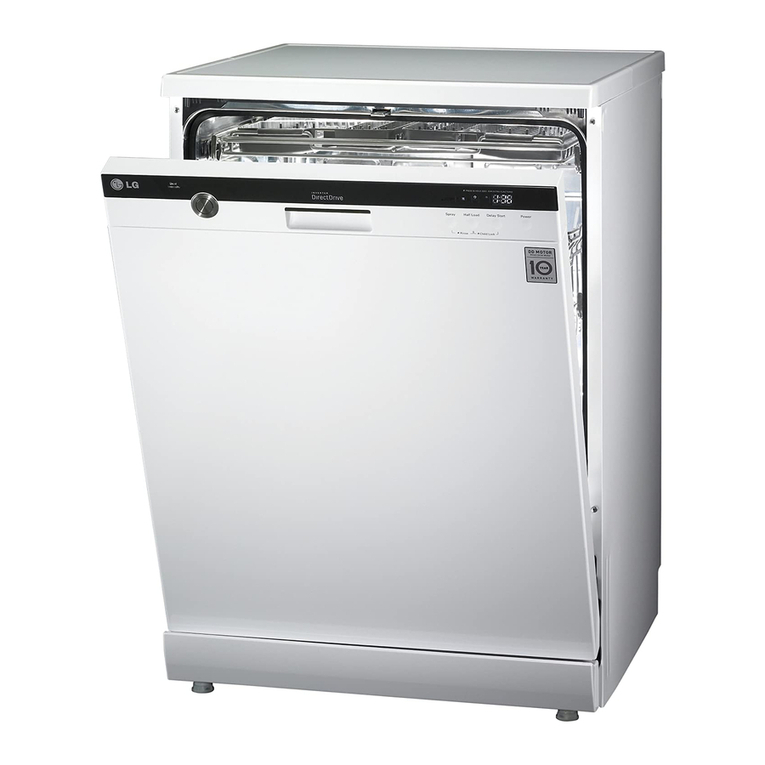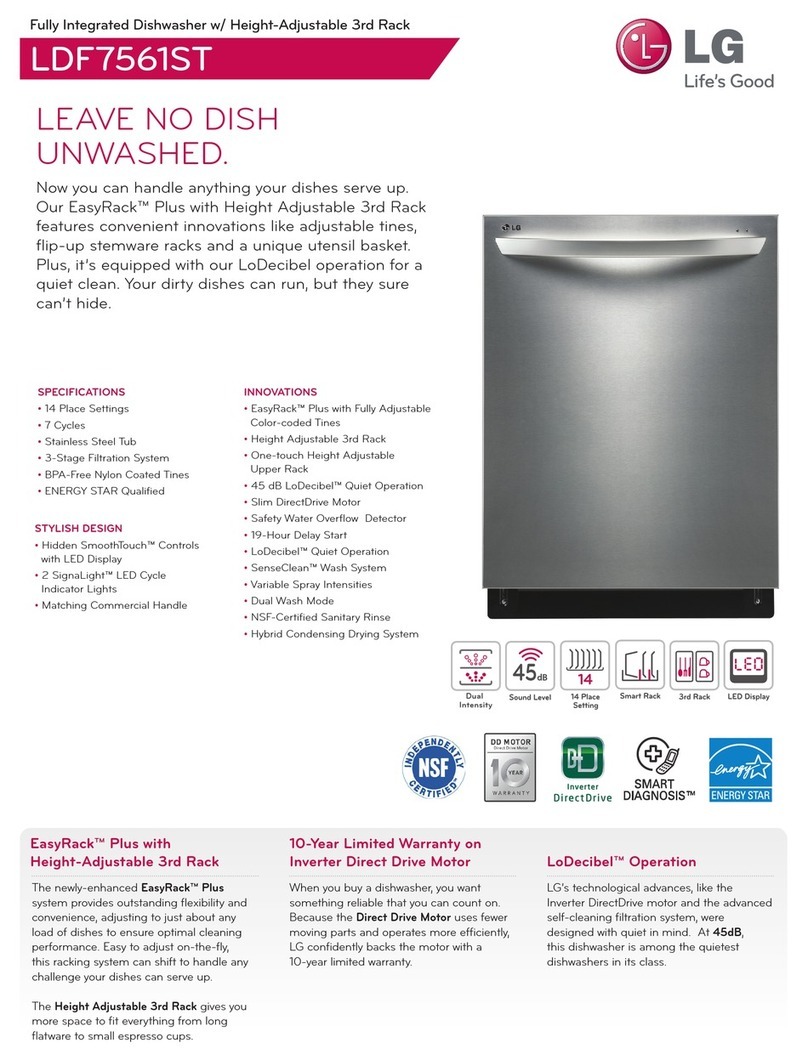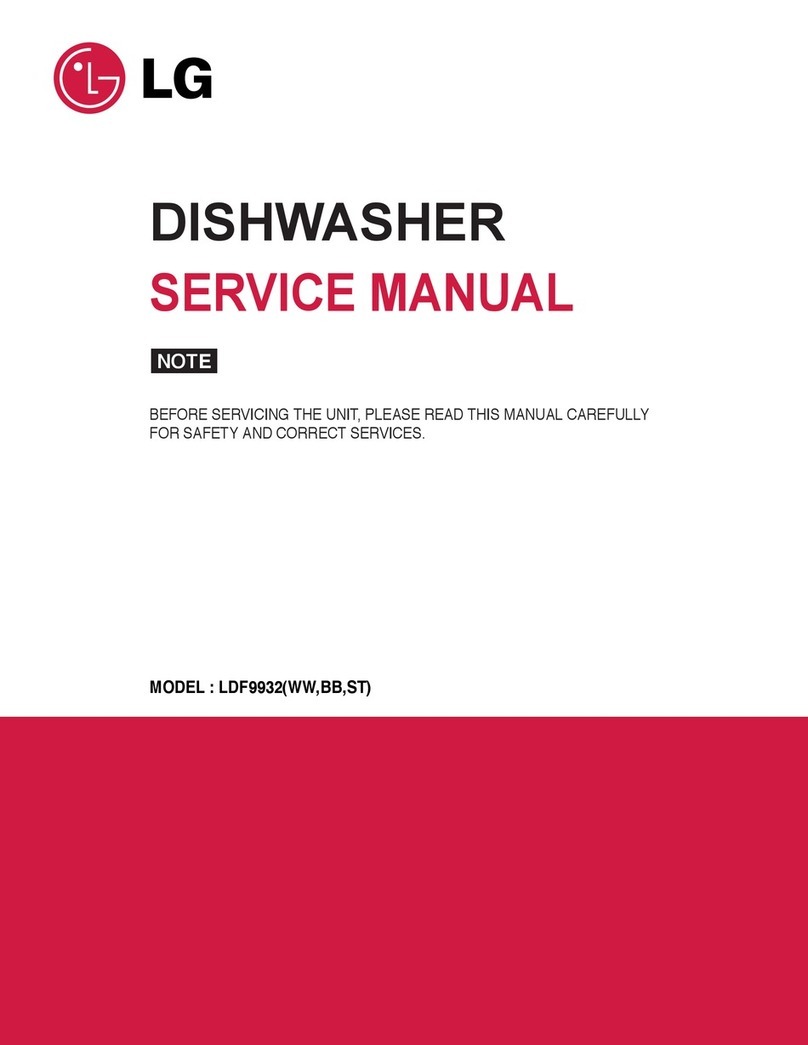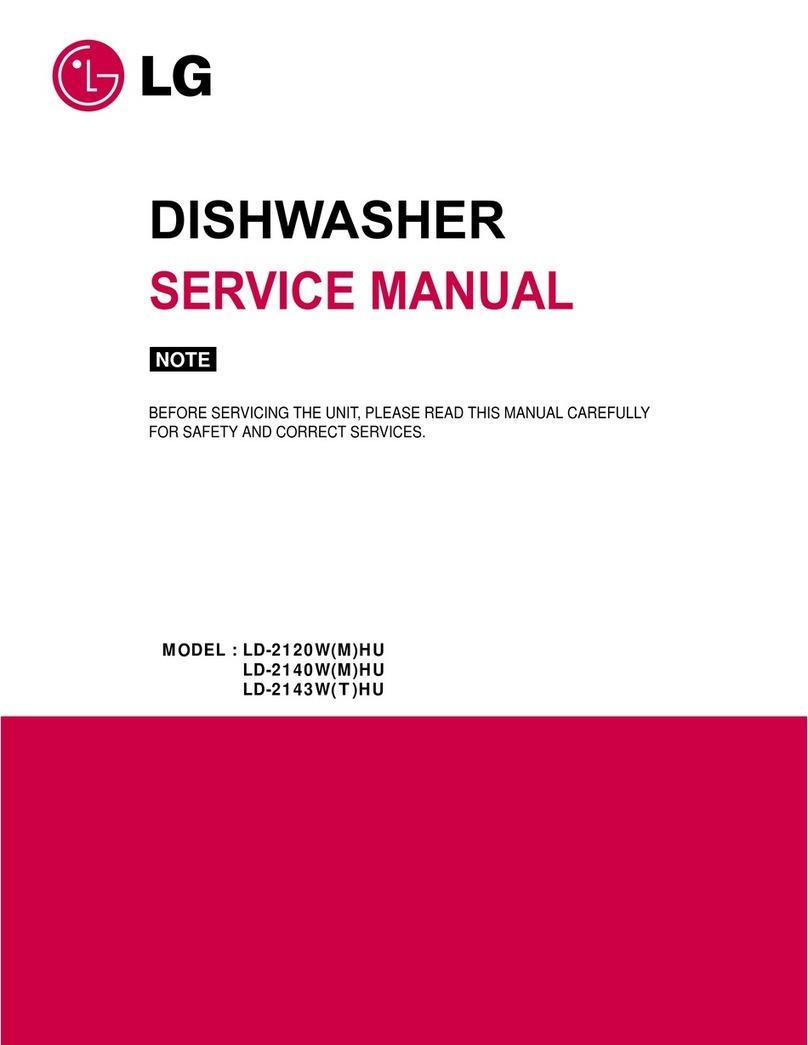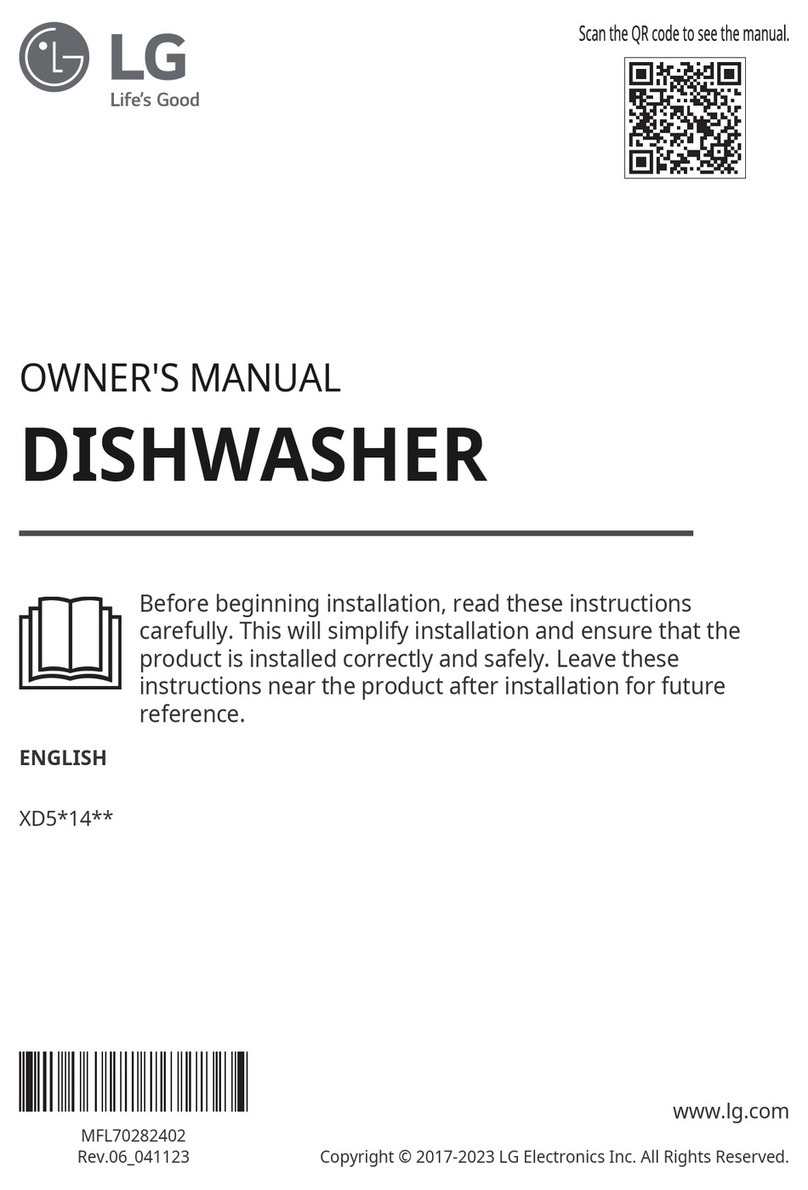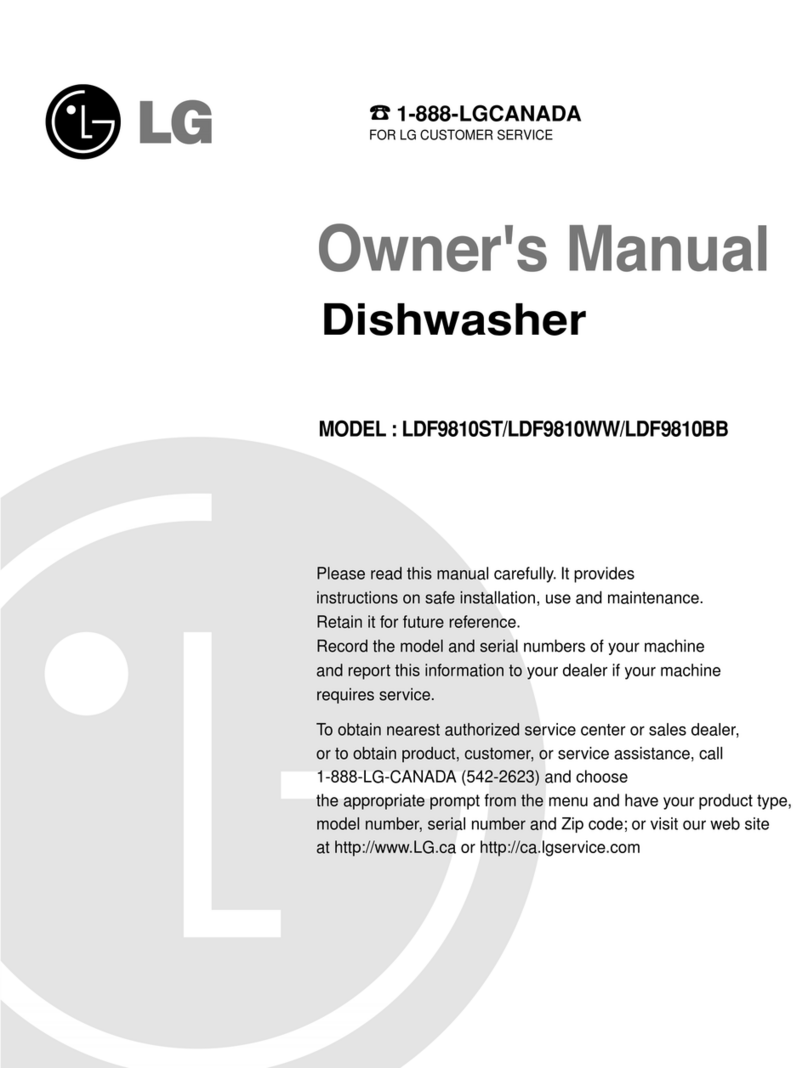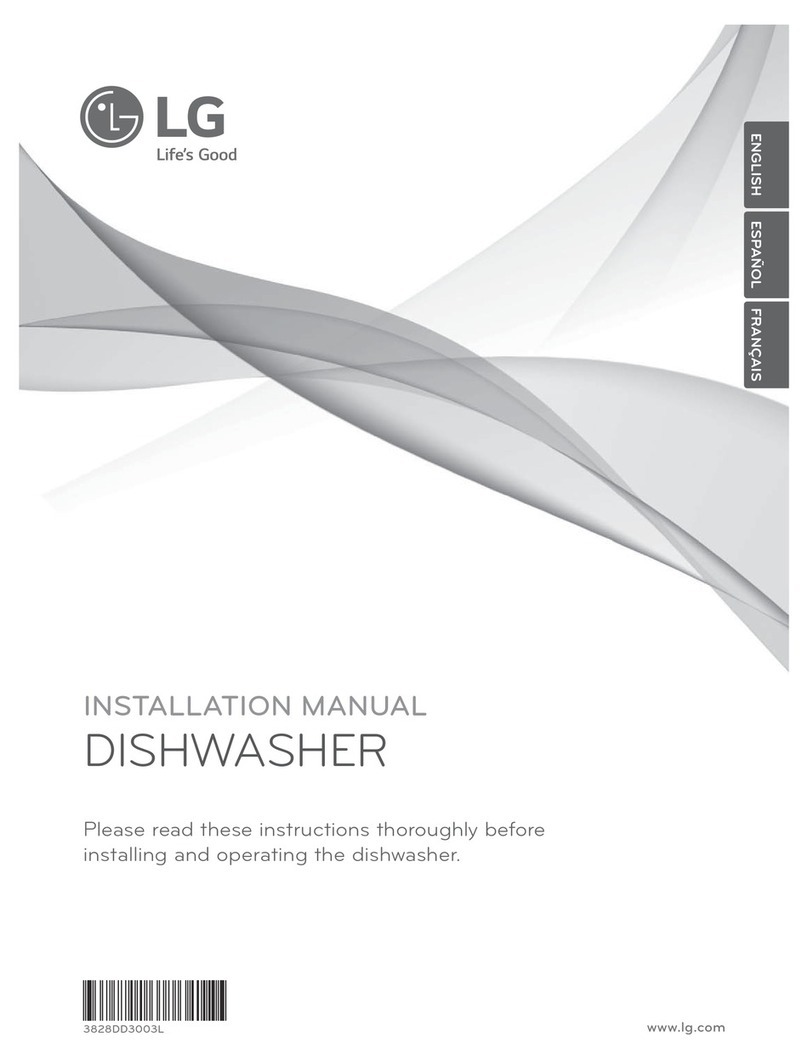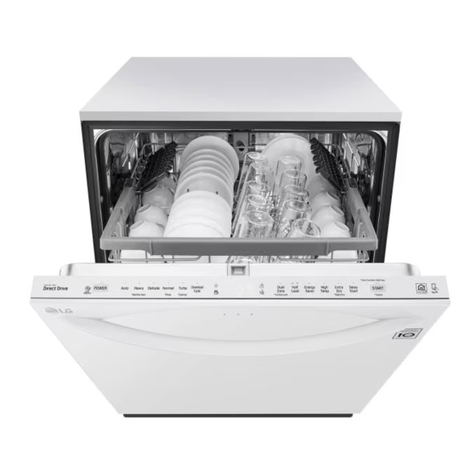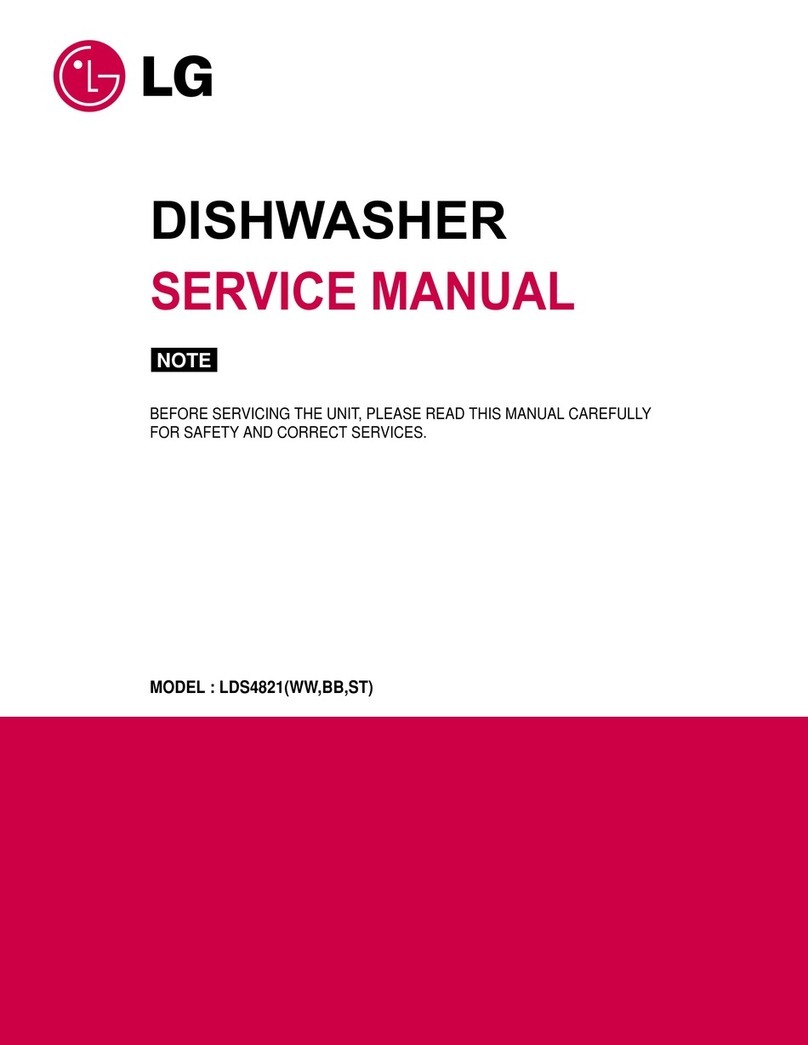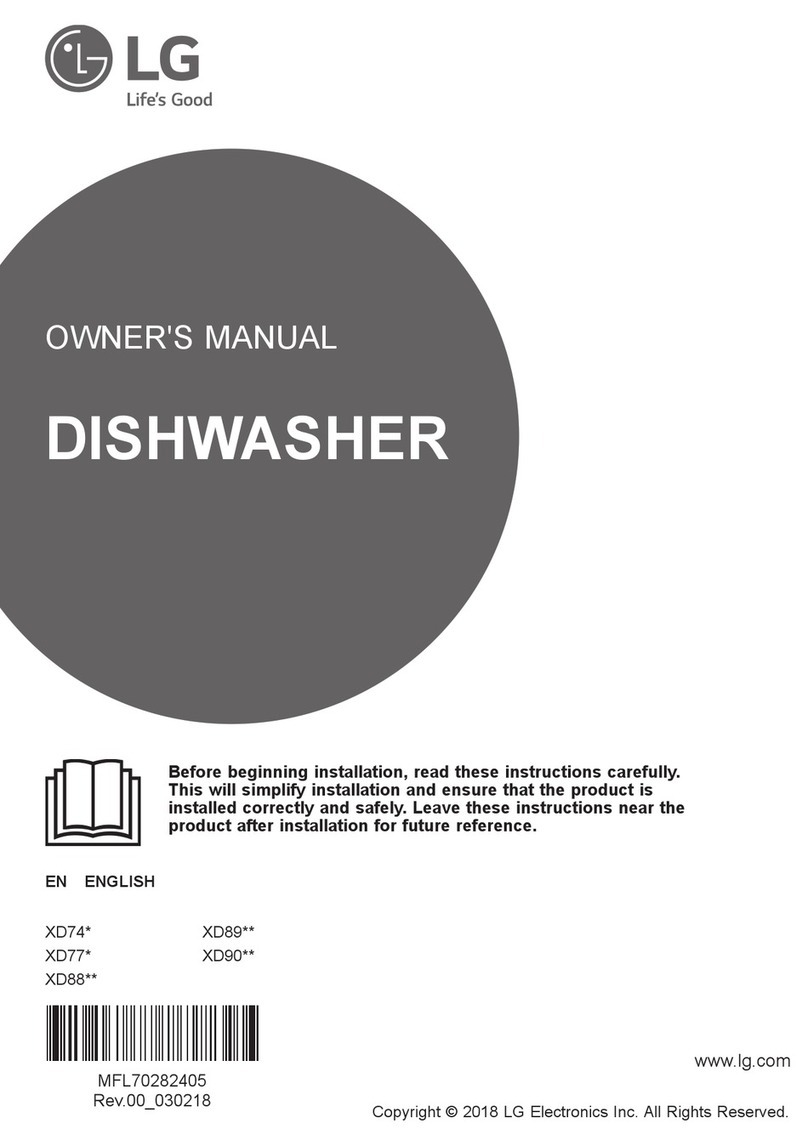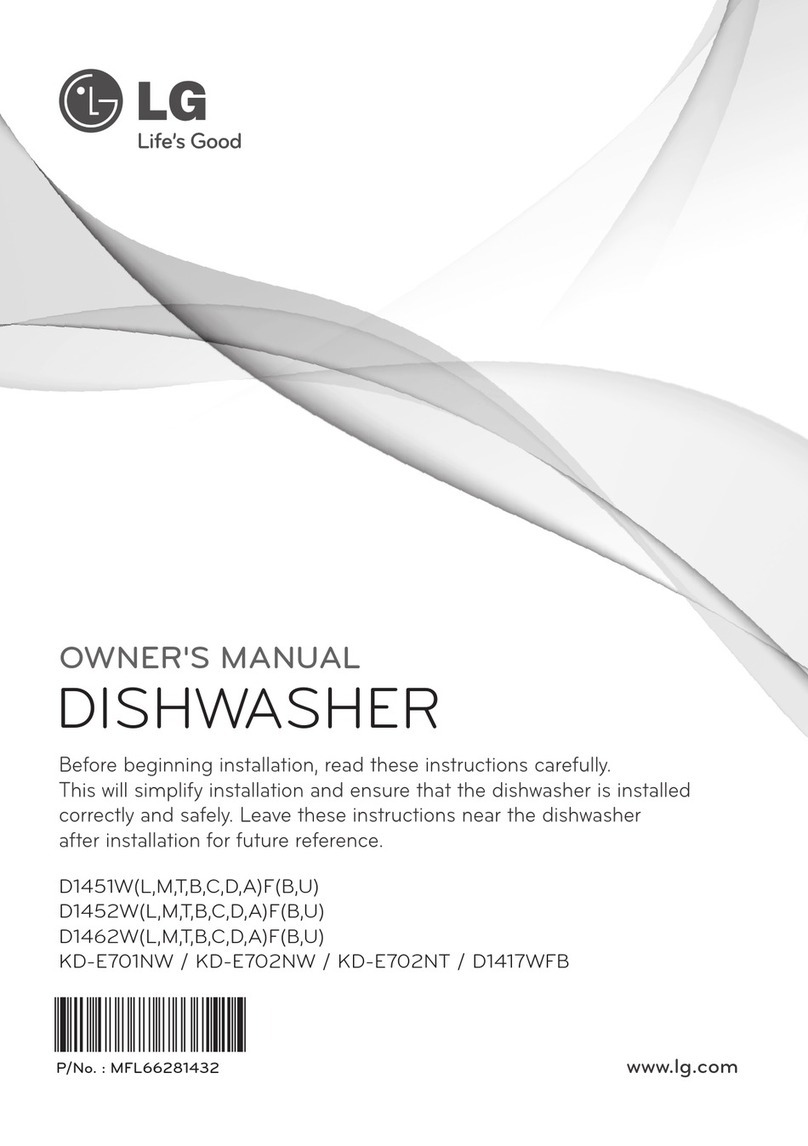
7
SAFETY INSTRUCTIONS
ENGLISH
• Do not repair or replace any part of the appliance. All repairs and
servicing must be performed by qualified service personnel unless
specifically recommended in this Owner’s Manual. Use only
authorized factory parts.
• Do not leave the appliance door open. Children may hang on the door
or crawl inside the appliance, causing damage or injury.
• Do not use flammable gas and combustible substances (benzene,
gasoline, thinner, petroleum, alcohol, etc.) near the appliance.
• Do not attempt to separate any panels or disassemble the appliance.
Do not apply any sharp objects to the control panel in order to
operate the appliance.
• Do not bend the power cable excessively or place a heavy object on it.
• Do not put animals, such as pets into the appliance.
• Do not touch the power plug or the appliance controls with wet
hands.
• If there is a gas leakage (isobutane, propane, natural gas, etc.), do not
touch the appliance or power plug and ventilate the area
immediately.
• In case of flood, disconnect the power plug and contact the LG
Electronics Customer Information Centre.
• Under certain conditions, hydrogen gas may be produced in a hot-
water system that has not been used for two weeks or more.
HYDROGEN GAS IS EXPLOSIVE. If the hot-water system has not been
used for such a period, before using the appliance turn on all hot
water tap and let the water flow from each for several minutes. This
will release any accumulated hydrogen gas. As the gas is flammable,
do not smoke or use an open flame during this time.
• Keep the area underneath and around your appliances free of
combustible materials such as lint, paper, rags, chemicals, etc.
• Some dishwasher detergents are strongly alkaline. They can be
extremely dangerous if swallowed. Avoid contact with the skin and
eyes and keep children away from the dishwasher when the door is
open. Check that the detergent receptacle is empty after completion
of the wash cycle.

